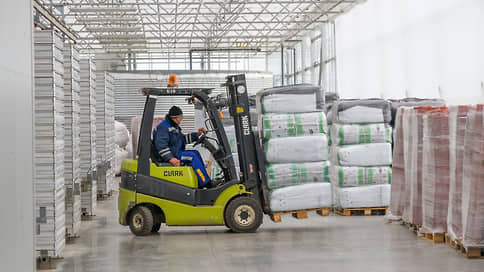Duty and lower export prices boost fertilizer sales in Russia
[ad_1]

Russian fertilizer producers, despite sanctions and an increase in the fiscal burden, increased their output by 3% over the seven months, partly due to increased demand in the domestic market. Since September 1, chemical companies are threatened with an increase in export duties, from which producers of phosphate and complex fertilizers will especially suffer, which may increase competition in the domestic market. World prices for fertilizers in the first half of the year were declining against the backdrop of falling gas prices, but analysts admit a trend reversal.
Chemical companies in January-July increased the production of mineral fertilizers by 3%, up to 31 million tons in physical weight, the Russian Association of Fertilizer Producers (RAPU) reported. Deliveries to Russian farmers, according to the Ministry of Agriculture, at the same time increased by 6%, to 4.4 million tons in the active substance. “Thus, by mid-August, Russian producers of mineral fertilizers provided 80% of the forecast volume of acquisition of the agro-industrial complex for the whole of 2023,” the report says. message RAPU.
Of the companies included in the RAPU, the largest suppliers to the domestic market are Phosagro with a share of 20.7%, Eurochem (15.3%) and Acron (13.3%).
Maxim Kuznetsov, executive director of RAPU, noted that the demand for fertilizers from Russian farmers has tripled over the past 15 years. “According to our estimates, in the next five to seven years, the consumption of mineral fertilizers in Russia will exceed 11 million tons in the active substance. To meet this need, RAPU member companies plan to invest about 2 trillion rubles in the development of production capacities and regional logistics channels,” he said.
Karen Davtyan from the Center for Economic Forecasting of Gazprombank notes that, focusing on the level of specific application of fertilizers in developed countries, the potential for increasing the capacity of the Russian fertilizer market is up to 10-15 million tons (in the active substance).
According to Kommersant’s sources in chemical companies, by the end of the year, fertilizer production will grow by about 3-5%, primarily due to an increase in demand within Russia.
At the same time, they note, competition in the domestic market may also increase after the introduction of a single ad valorem export duty rate on fertilizers of 8% from September 1. Now the export duty is valid only if the customs value exceeds $450 per ton. The transition to the ad valorem rate will hit the producers of phosphate and complex fertilizers the hardest, which have a higher cost. First of all, we are talking about Phosagro and EuroChem: for example, Gazprombank estimates Phosagro’s costs for paying export duties at 20 billion rubles. For comparison: Acron, which produces nitrogen fertilizers, expects payments to be half that. PhosAgro CEO Mikhail Rybnikov has already publicly called on the government to revise the methodology for setting duties, taking into account the cost of production.
At the same time, export shipments began to decline already in July: according to Russian Railways, they fell by 6% compared to June, to 2.8 million tons. In seven months, exports of fertilizers by rail increased by 1%, to 18.3 million tons. The drop in exports could be due to a strong correction in world prices by the middle of the year. Major global players such as Canada’s Nutrien and America’s CF Industries already cut their fertilizer production plans in early August, limiting supply.
According to Karen Davtyan from Gazprombank’s Center for Economic Forecasting, the correction in the first half of the year was due to weak demand from farmers and lower gas prices. The main phosphate fertilizers fell in price by 33-40% compared to the highs of 2022, nitrogen and potash fertilizers – by 66-70%. But, in his opinion, in the second half of 2023, a resumption of growth in fertilizer prices is expected due to a shortage of gas in Europe and Asia. Also, the ongoing process of de-industrialization in the EU nitrogen industry, combined with the planned tightening of climate regulation, will support new price hikes in this market, Mr. Davtyan believes.
[ad_2]
Source link





